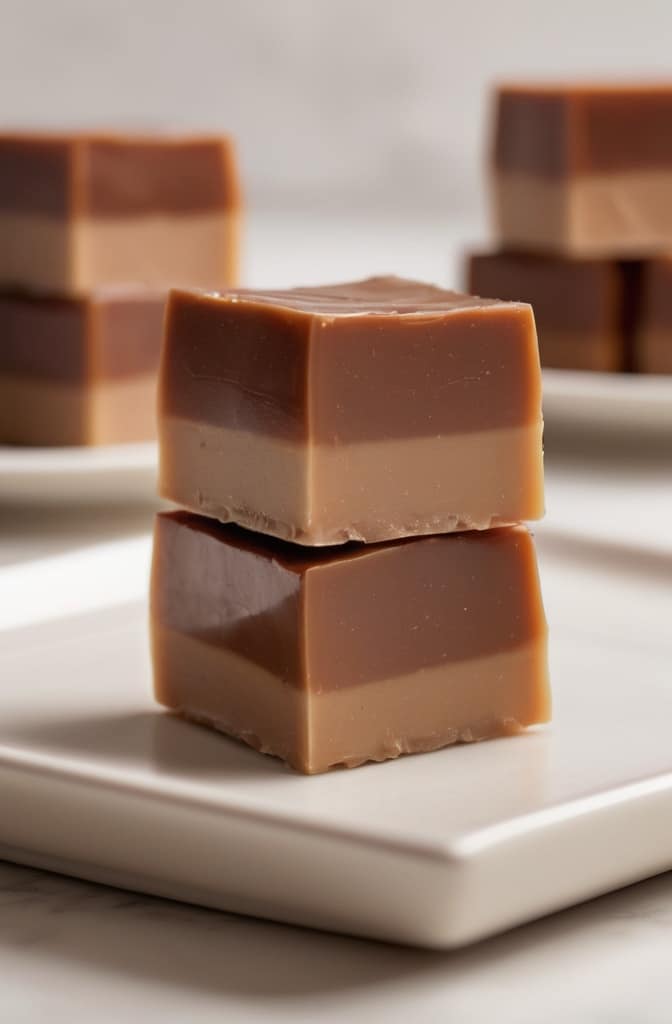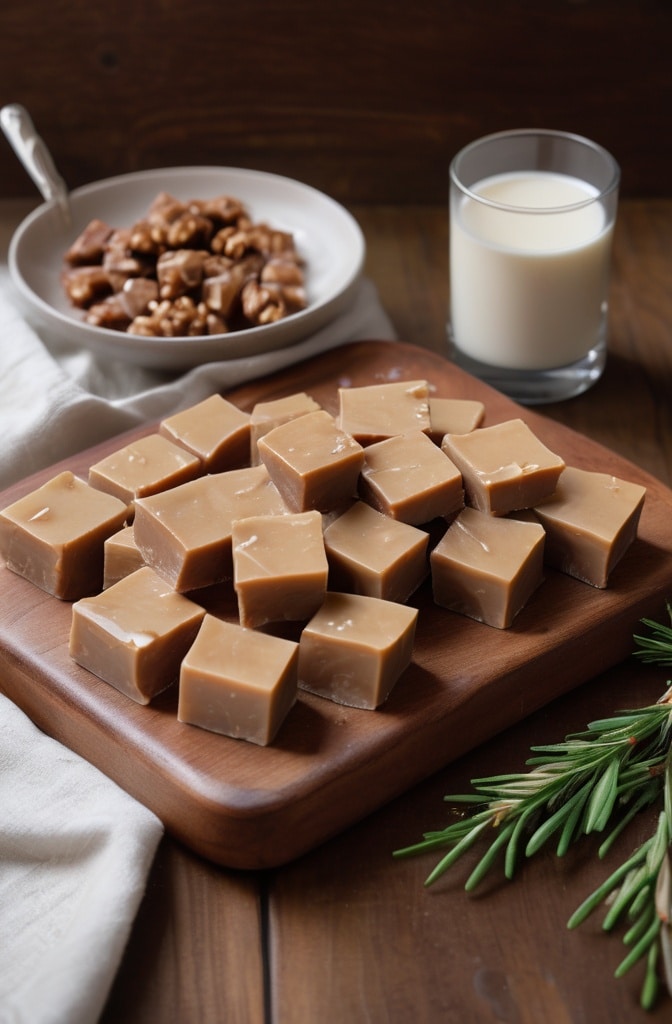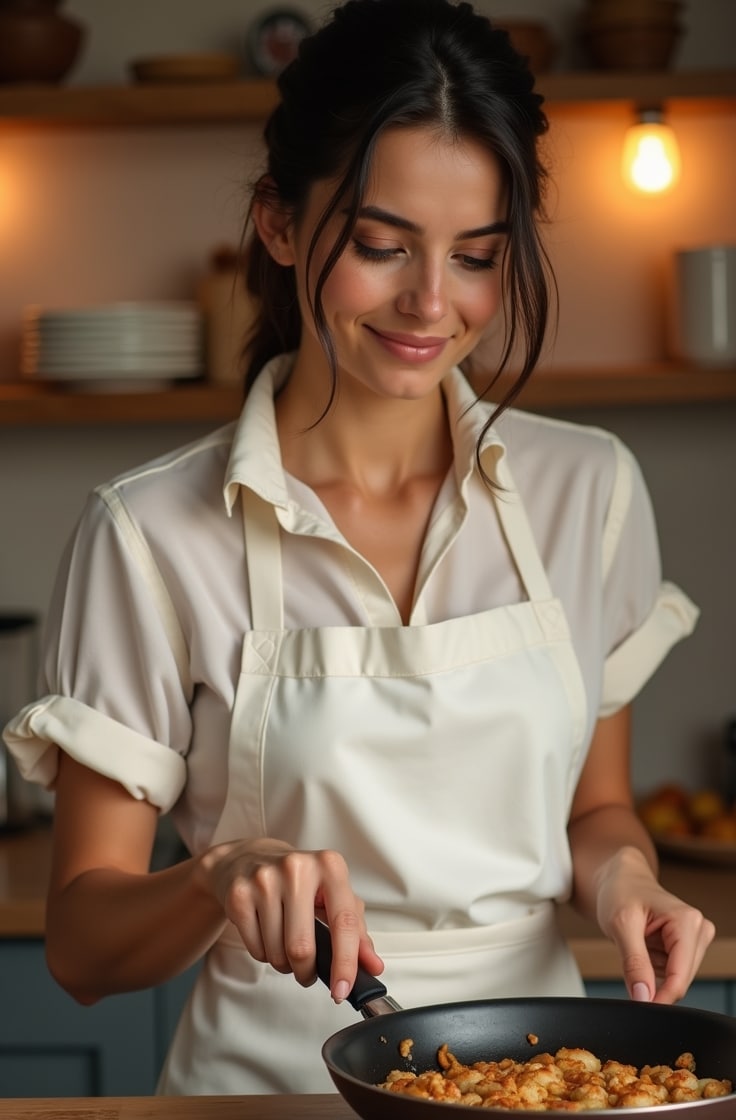There’s something almost magical about learning how to make delicious maple fudge recipe from scratch watching liquid sugar transform into velvety smooth fudge. That first bite, when the candy yields between your teeth with just the right amount of resistance before melting on your tongue, is culinary perfection. I’ve spent twenty years perfecting maple fudge recipes, and every time I lift that first square from the pan, I still get a little thrill.
How to make delicious maple fudge recipe isn’t just about making candy; it’s about capturing an expression of North American heritage distilled into buttery, crystalline perfection.
I’m gonna share everything I’ve learned about creating maple fudge that will make people wonder if you’ve been hiding a secret culinary degree. This isn’t your grandma’s recipe (though she’d probably approve).
Understanding Maple Fudge
Maple fudge stands apart from regular fudge because of its distinctive flavor profile—earthy, complex sweetness with notes of caramel, vanilla, and that unmistakable maple character that can’t be replicated with artificial flavorings. The tradishunal recipe originated in Quebec and New England, where sugar maple trees flourish and the transformation of sap to syrup has been practiced for centuries.
What makes a truly exceptional maple fudge? The texture must be creamy yet firm, with crystals so fine they’re imperceptible on the tongue. The flavor should showcase real maple without being cloying. And the color should be a warm amber—evocative of autumn leaves and woodsmoke.
Let’s dive into creating this remarkable confection together.
1. Ingredients & Substitutions
The Essential Components
- Pure maple syrup (1 cup, Grade A Dark or Very Dark for robust flavor) – accept no substitutes here, folks
- Granulated sugar (2 cups) – provides the foundation of your fudge
- Heavy cream (1 cup, 35-40% fat content) – creates that luxurious mouthfeel
- Unsalted butter (1/4 cup) – cultured European-style offers superior flavor
- Salt (1/4 teaspoon) – kosher or fine sea salt is ideal
- Pure vanilla extract (1 teaspoon) – amplifies the maple notes
- Optional: Maple extract (1/2 teaspoon) – for intensifying flavor in milder syrups
- Optional: Toasted walnuts or pecans (3/4 cup, chopped) – adds textural contrast and nuttiness
Ingredient Intelligence
The maple syrup you choose will dramatically impact your final product. Grade A Dark (formerly called Grade B) offers concentrated maple flavor that can withstand the addition of sugar and cream. Lesser grades will leave you with fudge that’s sweet but lacks that forest-born complexity we’re after.
If you’re dealing with dietary restrictions, some substitutions are possible but will alter the final product. For vegan fudge, coconut cream can replace heavy cream, and plant-based butter can substitute for dairy butter—but you’ll need to reduce the cooking temperature by about 2°F to compensate for different fat compositions.
For those avoiding refined sugar, you can experiement with coconut sugar or turbinado, but be prepared for a darker color and slightly different crystallization pattern. The sugar crystals are what give fudge its characteristic texture, so changing this ingredient fundamentally changes the outcome.
Maple sugar can replace up to half the granulated sugar for intensified maple flavor, but it’s pricey and can make the fudge overly maple-forward for some palates.
2. Step-by-Step Instructions

Equipment Preparation
Before you begin, gather these essential tools:
- Heavy-bottomed saucepan (3-quart minimum)
- Candy thermometer that clips to the side of your pan
- Wooden spoon for stirring (wood insulates your hand from heat)
- 8×8-inch baking pan lined with parchment paper
- Heatproof silicone spatula
- Stand mixer with paddle attachment (optional but helpful)
Preparation makes the diffrence between success and failure with candy-making. Measure all ingredients before starting, and ensure your thermometer is calibrated by testing it in boiling water (it should read 212°F at sea level).
The Cooking Process
- Combine the liquids and sugar. In your saucepan, mix the maple syrup, granulated sugar, heavy cream, and salt. Stir gently to combine, but avoid splashing sugar crystals up the sides of the pan (this can cause unwanted crystallization later).
- Heat gradually. Place over medium heat and stir occasionally until the sugar dissolves completely. This is crucial—undissolved sugar granules become seed crystals that will give your fudge a grainy texture. Once dissolved, stop stirring!
- Monitor the temperature rise. Insert your candy thermometer and allow the mixture to come to a boil. Do not stir from this point! The mixture will bubble vigorously; this is normal. You may need to reduce the heat slightly to prevent boil-overs.
- Cook to soft ball stage. Allow the mixture to cook until it reaches exactly 238°F (114°C), the “soft ball” stage. This presice temperature ensures proper crystallization for that perfect fudge texture. At higher altitudes, reduce the target temperature by 1°F for every 500 feet above sea level.
- Remove from heat. When your target temperature is reached, immediately remove from heat. Add the butter and vanilla but do not stir yet! Let the mixture cool undisturbed to 110°F (43°C). This cooling period is non-negotiable—it determines your final texture.
- Beat the mixture. Once cooled to 110°F, begin beating vigorously with your wooden spoon or transfer to a stand mixer with the paddle attachment. Beat continuously for 5-10 minutes until the mixture loses its glossy appearance and begins to thicken substantially. It should start to look matte and hold its shape briefly when the spoon is lifted.
- Add optional mix-ins. If using nuts, fold them in quickly at this stage. Work fast—the fudge will begin setting rapidly.
- Transfer to the prepared pan. Pour or scrape the mixture into your lined pan. Use your spatula to smooth the top. If it’s becoming too stiff to spread, place a piece of parchment paper on top and use your hand to press it evenly.
- Cool properly. Allow the fudge to cool at room temperature for at least 2 hours before cutting. Rushing this step by refrigerating can cause unwanted condensation and textural issues.
Common Pitfalls and Solutions
The difference between amateur and professional-quality fudge often comes down to avoiding these mistakes:
- Stirring during boiling: This creates seed crystals that result in grainy fudge. Once the sugar dissolves and boiling begins, put that spoon down!
- Inaccurate temperature: Even 2°F can drastically change the final texture. Invest in a good digital thermometer if you’re serious about confectionery.
- Insufficient beating: If you stop beating too soon, your fudge may remain too soft. It should lose its glossiness and noticeably thicken before pouring.
- Overbeating: Conversely, beating too long causes the fudge to seize and become unworkable. Stop when the fudge just begins to lose its sheen but is still pourable.
- Humidity issues: High humidity (above 65%) can prevent proper crystallization. On very humid days, cook to 1°F higher than the recipe states.
3. Cooking Techniques & Science
The Crystallization Magic
Fudge-making is fundamentally about controlled crystallization of sugar. When we dissolve sugar and then recombine it under specific conditions, we’re creating a supersaturated solution that forms microscopic crystals—the smaller these crystals, the smoother your fudge.
The cooling period before beating is vital because it allows some of the sucrose molecules to begin forming proper nucleation sites. The subsequent beating incorporates air and disrupts large crystal formation, resulting in the creation of thousands of tiny crystals instead of fewer large ones.
The butter and cream provide fat that coats these crystals, contributing to that melt-in-your-mouth sensation. The higher the fat content of your cream, the more luxurious the mouthfeel.
The Maple Factor
Maple syrup isn’t just for flavor—it contains glucose and fructose along with sucrose, which creates a more complex crystalline structure than recipes using only granulated sugar. This is why proper maple fudge has a slightly different texture than regular vanilla fudge.
The invert sugars in maple syrup (glucose and fructose) interfere with large crystal formation, which is actually beneficial for smooth texture. However, this also makes maple fudge slightly trickier to set properly than traditional fudge.
The slight acidity in maple syrup also affects how the proteins in cream behave when heated, contributing to that distinctive maple fudge character that’s impossible to achieve with artificial flavorings or maple-flavored corn syrup.
Cooking Tools That Matter
The heavy-bottomed saucepan isn’t just chef snobbery—it prevents hot spots that can cause localized caramelization or burning. This is especially crucial with maple syrup, which can scorch more easily than corn syrup due to its existing caramelization.

If you really want to elevate your game, copper pans conduct heat most efficiently, but they’re expensive and require special care. A good stainless steel pan with an aluminum or copper core is the practical choice for most serious candy makers.
The wooden spoon has scientific merit too—unlike metal, it doesn’t conduct heat from the molten sugar to your hand, and it doesn’t scrape the pan bottom in ways that might create seed crystals.
4. Serving & Pairing Suggestions
Presentation Excellence
Traditional maple fudge is often cut into one-inch squares, but there’s room for creativity here. Consider these elevated presentations:
- Cut into long, thin rectangles and stack them like Lincoln Logs for an impressive height on dessert plates
- Use small cookie cutters to create seasonal shapes that showcase the amber hue
- Dust with the faintest sprinkle of flaked sea salt just before serving to create flavor contrast
- Wrap individual pieces in parchment paper twisted at the ends for gift-giving with rustic charm
For plating at dinner parties, try placing a single perfect cube of fudge alongside a scoop of bourbon vanilla ice cream, with a tiny pitcher of warm maple sauce for pouring.
Complementary Flavors
Maple fudge has natural affinities with:
- Apples and pears – the fruit acidity balances the sweetness
- Dark rum or bourbon – complements the caramel notes
- Coffee or espresso – the bitterness creates perfect counterpoint
- Smoked salt – enhances the woodsy elements in the maple
- Bacon – if you’re feeling adventurous, crumbled crisp bacon folded into the fudge creates a sweet-savory sensation that’s utterly addictive
Serve maple fudge as part of an autumn dessert board with sliced apples, sharp cheddar cheese, and toasted pepitas for textural contrast.
Beverage Pairings
The perfect drink pairing depends on the occasion:
- Coffee service: An americano or pour-over with bright acidity cuts through the sweetness
- After dinner: Aged rum, bourbon, or a Pedro Ximénez sherry matches the intensity
- Afternoon tea: A robust Assam or Yunnan black tea complements without overwhelming
- Family gatherings: Mulled apple cider (hot or cold) creates a nostalgic pairing
For the ultimate Canadian experience, serve with ice wine from the Niagara region—the concentrated sweetness and acidity form a remarkable partnership with the maple complexity.
Conclusion
Creating truly exceptional maple fudge requires attention to detail, quality ingredients, and a bit of science—but the results are transformative. The perfect batch has that delicate balance of aroma, flavor, and texture that transports you to sugar shacks and autumn forests.
Remember that candy-making is part science, part art. Your first batch might not be perfect, but each attempt teaches you something about temperature, timing, and technique. Don’t be discouraged by early failures; they’re just stepping stones on your path to confectionery mastery.
The most important secret? Use real maple syrup. Accept no substitutes. The difference between artificial maple flavor and the real thing is like the difference between a photocopy and an original masterpiece. Your palate—and your grateful recipients—will thank you for your commitment to authenticity.
Now go forth and create maple magic in your kitchen. There’s something deeply satisfying about transforming simple ingredients into something so luxurious through nothing more than heat, time, and technique.
FAQs
Why did my fudge turn out grainy instead of smooth?
Graininess typically occurs when sugar crystals form too early or too large during the process. This could be because you stirred during boiling (introducing seed crystals), had sugar crystals on the side of your pan, or didn’t allow the mixture to cool sufficiently before beating. Using a pastry brush dipped in water to wash down the sides of the pan during cooking can help prevent this issue.
My fudge never set properly and remained too soft. What went wrong?
Undercooking is the most common culprit—your mixture likely didn’t reach the crucial 238°F soft-ball stage. Always use a reliable candy thermometer and make sure it’s not touching the bottom of the pan (which can give false readings). High humidity can also affect setting; on very humid days, cook to 239°F instead.
Can I double this recipe for larger batches?
Yes, but with caution. Larger batches generate more heat and cool more slowly, which can affect crystallization. When doubling, use a larger pan and expect to cook slightly longer. The cooling period may also need to be extended. For best results, increase by no more than 50% at a time until you’re comfortable with the adjustments needed.
How should I store maple fudge and how long will it keep?
Store maple fudge in an airtight container at cool room temperature (65-70°F) for up to 2 weeks. Place parchment paper between layers to prevent sticking. Refrigeration can extend shelf life to 3-4 weeks but may slightly affect texture. Fudge can also be frozen for up to 3 months—wrap tightly in plastic wrap, then foil, and thaw at room temperature in sealed packaging to prevent condensation.
Why does the recipe specify not to stir after boiling begins?
Stirring during the boiling phase disrupts the carefully forming sugar structure. It can cause premature crystallization, leading to a grainy, unpleasant texture. The no-stir period allows the sugar solution to remain supersaturated until you’re ready to deliberately introduce crystallization through controlled beating at the proper temperature.

